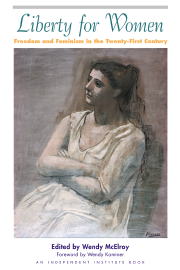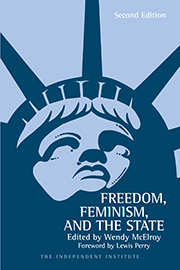A year ago, on June 23rd, the Supreme Court ruled in favor of affirmative action (AA) in two cases that challenged the University of Michigan’s (U-M) admissions policies. Yet Ted Shaw, president of the National Association for the Advancement of Colored People (NAACP) Legal Defense Fund, has stated, “in the year since Michigan...some institutions have retreated from affirmative action even though we won the case.” Why is AA on the decline?
There are several reasons. First, the Supreme Court decisions were not a clear victory, with the main case Grutter v. Bollinger et al. decided by a close 5-4 vote. In the second case, Gratz et al. v. Bollinger et al., the Court struck down the specific AA policy being used for undergraduate admission and insisted upon a more ‘holistic’ approach to evaluation.
The Supreme Court’s ambiguous attitude toward AA in academia is echoed through lower courts across America, with some states explicitly rejecting the policy. Last Friday, for example, a Florida appeals court rejected a NAACP challenge to rules that eliminated racial and gender preferences in public university admissions. True, the rejection was on a technicality but the fact remains: AA advocates can no longer assume that courts will smile upon their goals or facilitate them.
Even favorable court decisions can cause problems for AA. The holistic assessments mandated by the Supreme Court replaces faster, simpler formulas that automatically assigned “credits” to minorities. This means that cash-strapped universities have to hire extra staff to evaluate long application forms if they wish to be “in compliance.” The undergraduate admissions office of U-M, for example, spent $1.8 million to hire new staff and adapt its application process.
The cost of non-compliance is high, with “excluded” students increasingly willing to file discrimination suits. In doing so, they find support from two aggressive organizations, the Center for Equal Opportunity and the Center for Individual Rights, which represented plaintiffs in the U-M case. Both organizations are trying to open up race-based scholarship and recruiting programs to all students. Each uses an argument familiar to AA advocates: civil rights.
Another barrier to AA policies based on race and gender is a growing perception that they are de facto obsolete. In the U-M opinion, Sandra Day O’Connor stated that affirmative action would not be needed in 25 years. Many call that time estimate wildly pessimistic: AA is not needed right now.
Whichever estimate you use, universities are reluctant to invest in a program that may be on its way out. A large part of AA’s obsolescence comes from the collective impact of sustained, impassioned criticism of the policy as unjust.
At its root, AA is an ambitious campaign of social engineering. It is an attempt to redistribute social and economic power by forcing institutions - through law and court precedents - to prefer women and minorities. The underlying sentiment is a noble one that is being badly used. Speaking in opposition to the U-M case, President Bush stated, “I strongly support diversity of all kinds, including racial diversity in higher education. But the method used by the University of Michigan to achieve this important goal is fundamentally flawed.”
It is time to question whether AA is a noble goal. Advocates of U-M’s policies speak in collective terms about race disadvantage and gender inequities. What they don’t deal with is individuals. AA admission (and other) policies do not look at the individual merits of your son or daughter at the grade average they’ve struggled to maintain, the volunteer organizations they’ve joined, the dreaming human beings they are.
Instead, AA advocates see skin color and genitalia. There is nothing noble about that vision.
How did this happen?
AA began on June 19, 1963, when President John F. Kennedy sent a Civil Rights Act (CRA) to Congress to counter racial discrimination in the work place. The CRA, intended primarily for blacks, met stiff political opposition. On November 22, 1963, Kennedy was assassinated. His successor Lyndon B. Johnson proclaimed, “No memorial oration or eulogy could more eloquently honor President Kennedy’s memory than the earliest passage of the civil rights bill for which he fought so long.” But opposition was still stiff.
On February 8, 1964, Congressman Howard W. Smith of Virginia made a colossal miscalculation in the House of Representatives. In an attempt to block the CRA, he suggested inserting the word ‘sex’ after the word ‘religion’ whenever it appeared in Title VII, which guaranteed ‘fair’ employment practices. By tying it to the then controversial women’s movement, Smith hoped to kill the CRA.
In his book “Freedom Will Conquer Racism and Sexism”, J. Edward Pawlick, comments on reaction in the House. “[T]he laughter became too great... and Congressman Smith had to stop.” Disingenuously, Smith assured the House that he was serious. The bluff backfired. The CRA passed.
Within decades, government had imposed de facto quotas and fair practice standards for women (and minorities) throughout the work place and academia. That had not been Kennedy’s intention.
Gandhi once said that the means are the ends in process. It is not possible to achieve equality and tolerance by instituting policies of preference and exclusion. The result will only be more preference and more exclusion.









